The traditional craft of weaving brocade has existed for hundreds of years in My Nghiep Village, Phuoc Dan Town, Ninh Phuoc District, Ninh Thuan Province. Over the years, the local people have maintained techniques on weaving brocade according to the traditional method that helps preserve the Cham cultural features.
According to locals, artisan Ponuga is the founder of the craft that was then handed down to the Cham people in Ca Klaing (present-day My Nghiep) Village. Previously, to have the materials for making brocade products, it took the locals much time and effort to grow cotton plants, take the fibres, dry and dye them. They used Chum bau leaves for dyeing and then soaked it into mud for seven days to create the black colour, the latex of Canh kien plants in the forest to create the red colour and leaves and barks of indigo plants to create the indigo-blue colour. However, all the materials, from fibres to artificial colourings, are now available in the market, facilitating the craft of locals.
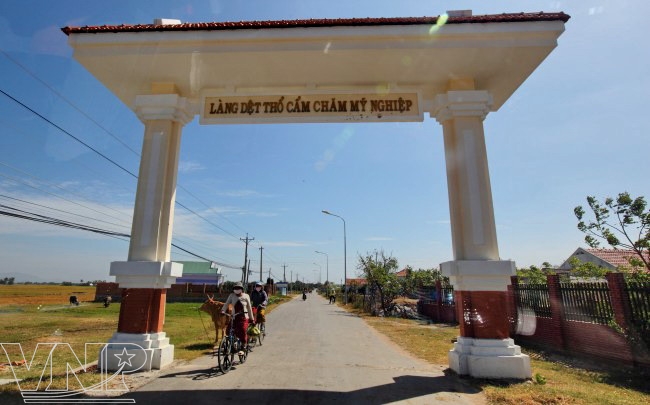
The traditional brocade weaving craft has existed for hundreds of years in My Nghiep Village.
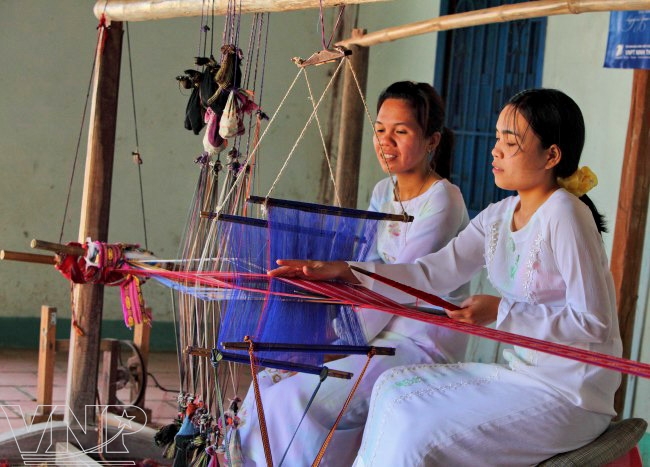
Cham girls in their traditional costume.
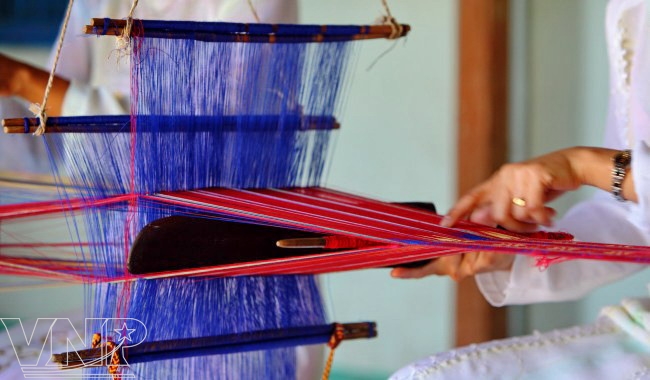
Weaving brocade.

To create delicate and unique patterns, the artisans must have an aesthetic sense and experience in mixing colours.

The craft shows a distinctive cultural feature of the Cham people. |
Among the steps of weaving brocade, the most difficult one is blending the colours for patterns that require the artisans’ aesthetic sense and experience. For the step of weaving, the weavers must manipulate the threads in a harmonious way so the brocade will be flat with striking colourful patterns.
Each brocade made by My Nghiep villagers is different from others in terms of patterns, motifs and designs even though they are made by one weaver. It is the unique feature of My Nghiep brocade products. On the background colours of red and black, the typical colours of Cham brocade, are diverse patterns, such as basic geometric shapes, clouds, dragons and animals. The patterns on the Cham women’s costumes also reflect their position and class in society.
The brocade weaving craft has been preserved and developed by the Cham people in not only My Nghiep Village, but also in Huu Duc, Chung My and Van Lam in Ninh Thuan and other villages in Binh Thuan Province. In other villages only women engage in the craft whereas both men and women in My Nghiep practice the craft.
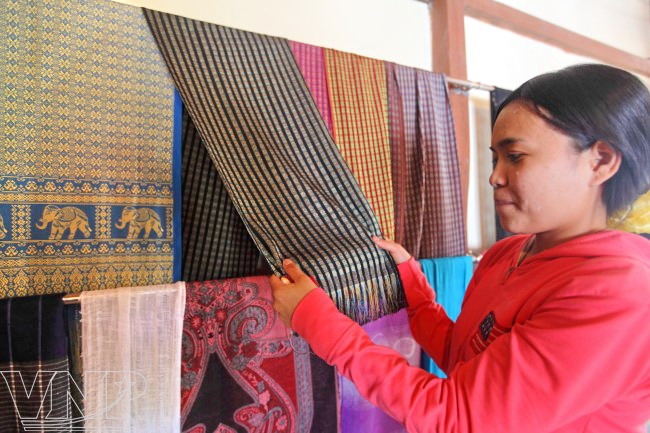
Some brocade products of the Cham people in My Nghiep Village.
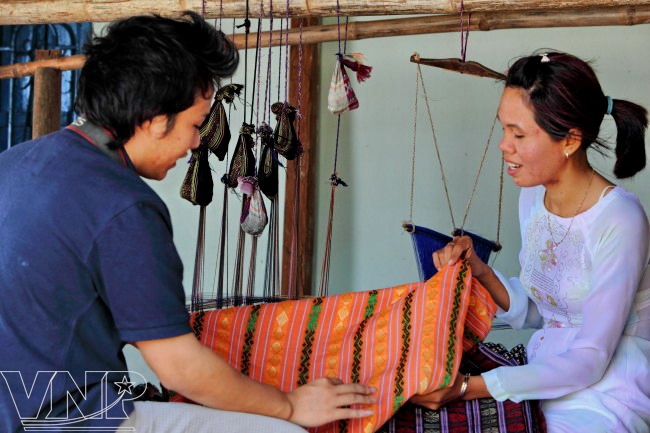
Diverse patterns on brocade products.

High quality brocade products made by My Nghiep locals.

Diverse products for tourists.
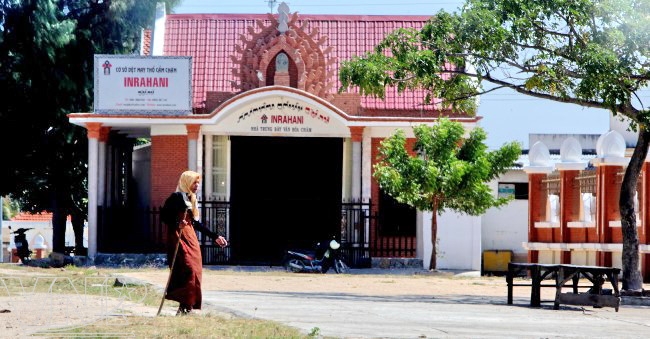
Inrahani production workshop has made a contribution to introducing the brocade products of My Nghiep Village to other countries. |
Besides traditional products, the My Nghiep villagers now make different products, such as bags, purses and backpacks which are sold in the domestic market and exported to Japan, German, France and the US. The craft has provided jobs for local people, improving their living standards. To further develop the craft, artisans in the village pay much attention to creating new, unique patterns to meet the demand of customers while young people start promoting and introducing their products in Ho Chi Minh City and other provinces nationwide.
Thanks to their high quality, the products of My Nghiep Village have won many great prizes both at home and abroad and artisans are invited to participate in many trade fairs and exhibitions in China, Thailand, France and Malaysia. The village is also recognized by the Vietnam Handicraft Villages’ Association.
Story: Nguyen Vu Thanh Dat - Photo: Huu Thanh
Story: Nguyen Vu Thanh Dat - Photo: Huu Thanh